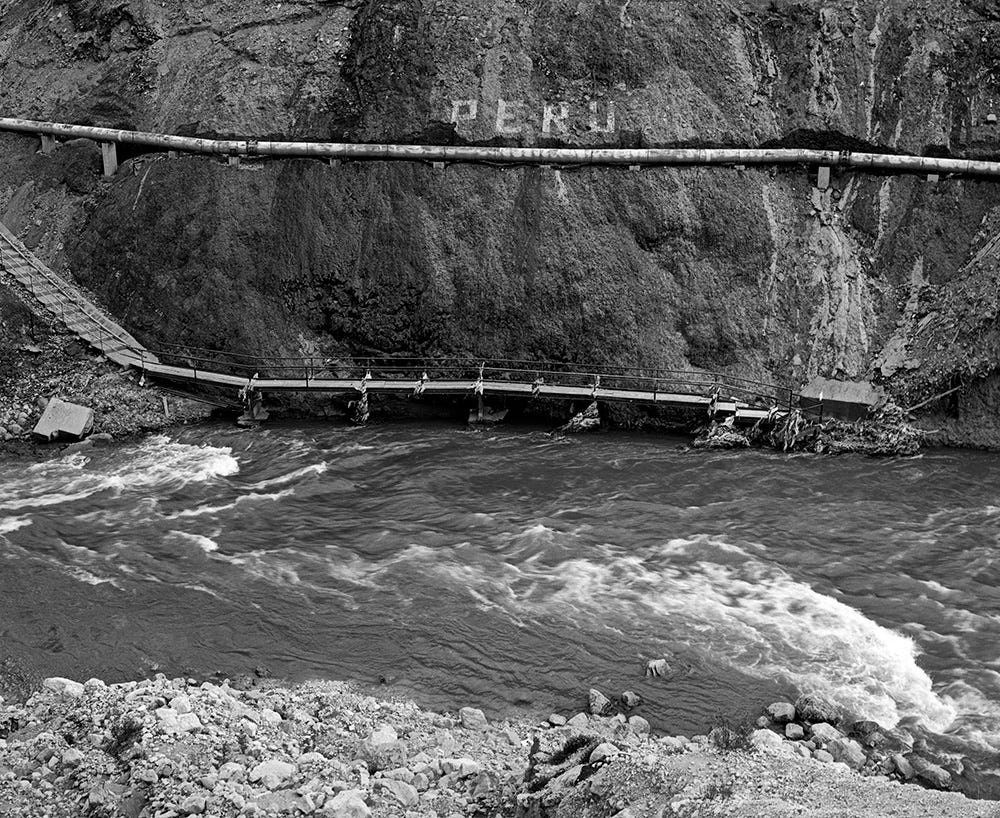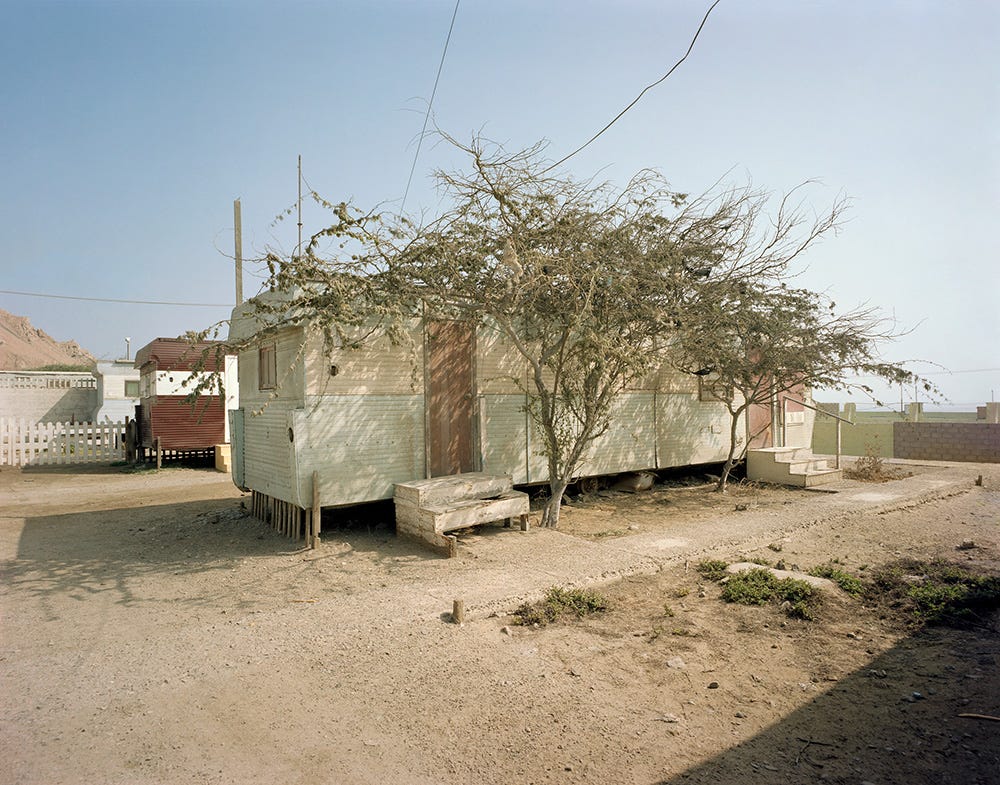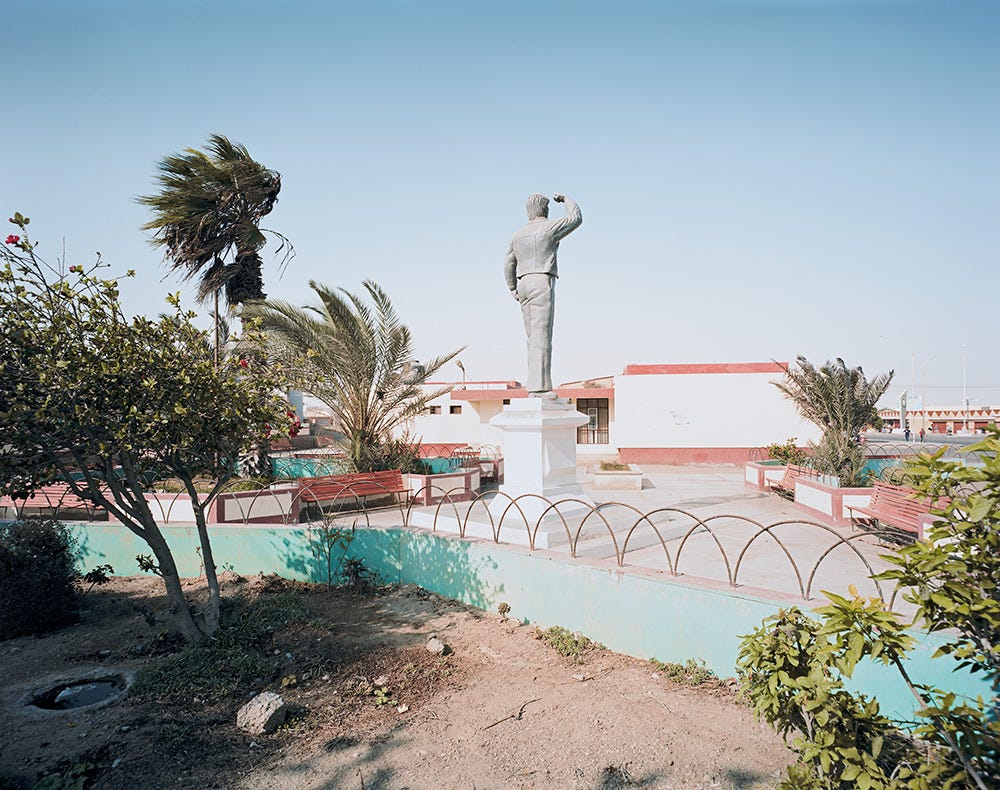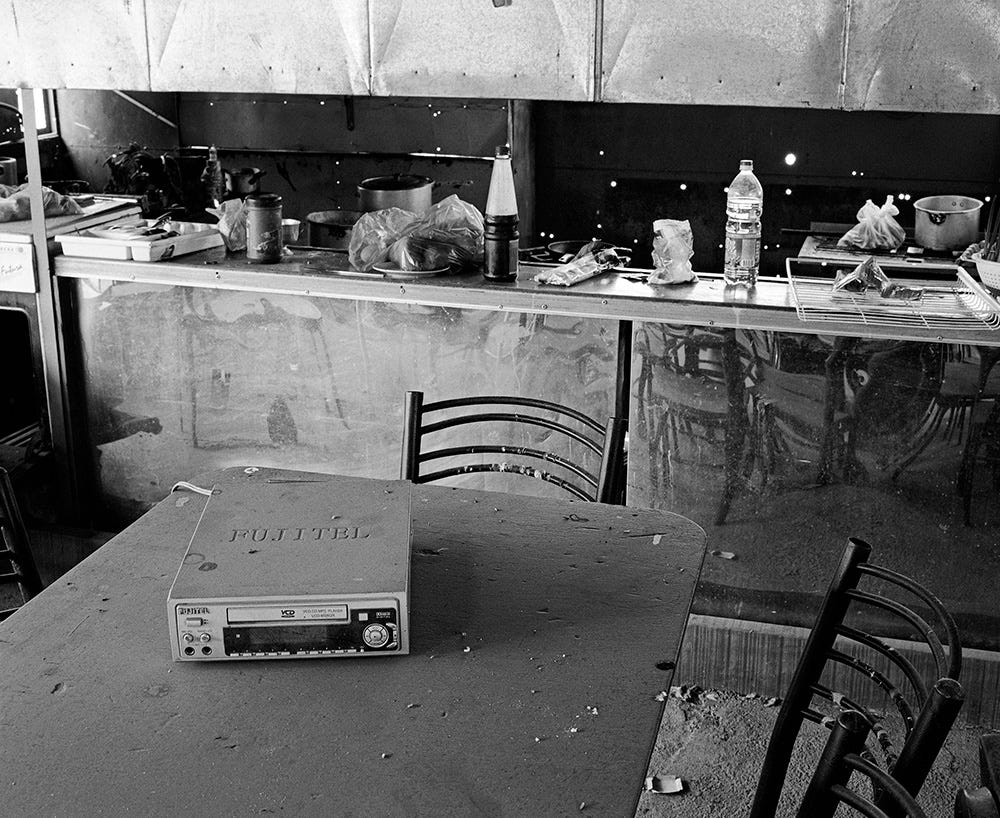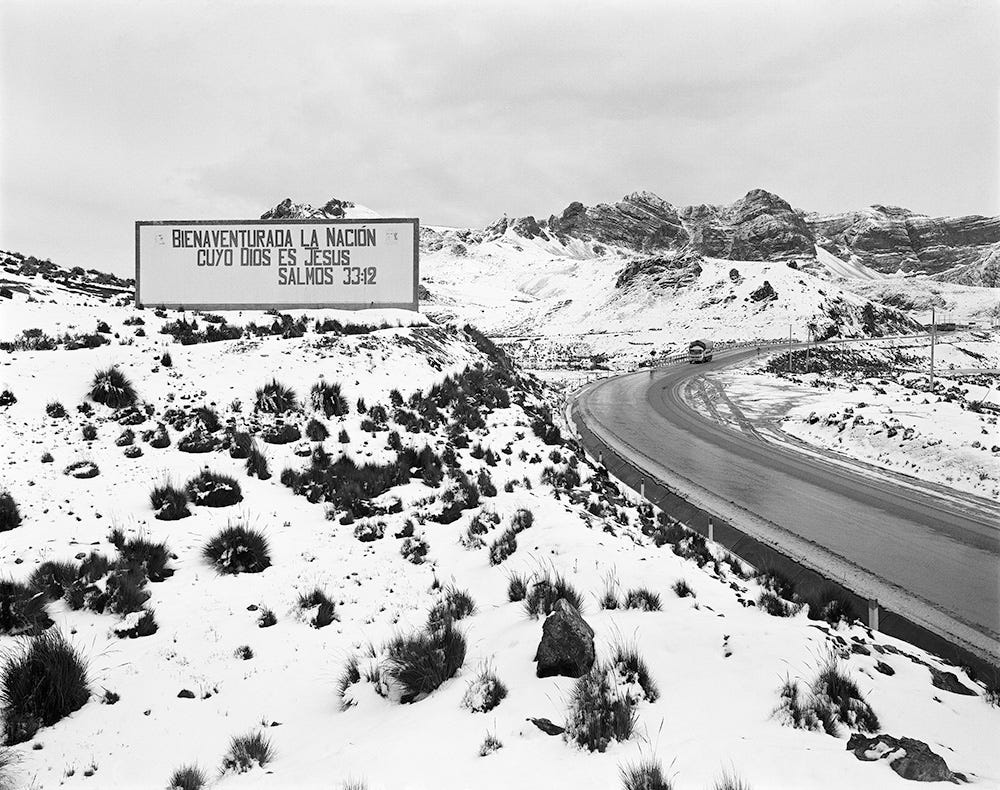The exploitation of Peru’s mineral resources, one of its main assets, dates to the 16th century and accounts for some of its greatest injustices. During the past century, the industry was involved in a vicious cycle of nationalization and privatization that impacted the cities where the mines are located as well as the unions that provide them with a workforce. Now that rare-earth minerals are in high demand to power everything from smartphones to cars, the miners’ struggle for decent working conditions seems likely to continue. Two recent books by Peruvian photographer Pablo Hare, Marcona and 3600 / 4800 m s.n.m document key mining locations of his country. The former is in color and concentrates on the seaside mining town of the title, while the monochromatic pictures in the latter capture the mountain mines in La Oroya.
A slim volume with a striking yellow cover, Marcona (RM/ Toluca Éditions, 2019) brings together photographs of decaying buildings in a town that has seen most of its life stripped away. Empty workers’ barracks, an abandoned cinema, and an old trailer home are some of the entries in a catalog of structures that stand like damaged sculptures on the vast plinth of the dessert, most of them unattached to the kind of infrastructure we take for granted in a metropolis. Few marks delimit individual ownership because everything belongs to the mine. The dirt of the unpaved roads adds to the feeling of inhospitality, and it’s easy to see how challenging it must be to live there. On a coastal desert, the sun and the wind are double-edged swords, blessing everything with their grace, then squashing the dreams of those who dare to turn energy into hope. You’d be forgiven to think that these buildings stand empty because of a natural disaster, but the town’s demise resulted from foreign greed and domestic corruption, bringing an end to an ambitious social project that affected the livelihood of thousands of people.
At the end of the book, a brief text tells the mine’s story: founded in 1952 by an American veteran to extract iron, the mining company built a town where everything was designed to increase productivity. The mine’s working conditions were good in those early years due to the brokering command of the unions. When the company was expropriated in the 70s, efficiency steadily deteriorated until its bankruptcy in 1989. That same year, the union boss Saúl “Ringo” Cantoral was killed by paramilitaries (the Rodrigo Franco Commando), sparking a conflict between the state and the guerrilla organization Sendero Luminoso (Shining Path). In 1992, the company was eventually sold in a corrupt deal by President Alberto Fujimori to a state-owned enterprise from China, after which the local union lost most of its power.
A picture of an empty multipurpose room helps us visualize the union’s current activities under Chinese ownership while subtly questioning whether any progress has been made since the heyday of the conflict. Cantoral’s story is more directly referenced in a picture of his statue in a modest plaza, one of the few images in the book of public spaces still in use. Conversely, the abandoned buildings in the sequence evoke the times when the prospect of dignified labor seemed within reach. The social hierarchies of the initial company are still fixed in Marcona’s landscape. For instance, a detached house that once belonged to a manager looks as if it had been transplanted from a working-class American suburb. Hare uses these instances to show how the town was shaped by a foreign corporate ethos. However, the status quo can devolve even when things seem unchanged on the surface. It is common for these enterprises to indoctrinate their workers to achieve high productivity. An inscription on the side of a building reads, “The best prize when safety measures are followed is a long and happy life,” a phrase that, while true, shifts the onus to the workers. This attitude of evasion of responsibility by the current Chinese management has led to much misconduct, which is well documented in the Peruvian press.
Similarly, 3600 / 4800 m s.n.m (Meier Ramirez/ Toromuerto Press, 2021) is an indirect exploration of the social conditions that sustain a mining community. Hare avoids romanticizing the striking beauty of the Central Sierra, capturing nature’s indomitable qualities with a somber mood. This emotional distancing begins with the title, a factual description of the region’s elevation above sea level. Nevertheless, Hare gives us a wide variety of scenes – including several shots made in houses, shops, and offices – so that we imagine the kind of life the mine sustained. The book’s large size facilitates a closer inspection of its dense compilation of signs, particularly in the handful of images laid out as double spreads.
Literal inscriptions and other visual remnants prompt us to question the troubled histories harbored by these mountains. Words like “Huelga” (strike) or “Terrorista” (terrorist) are easy to understand and place into context. Still, other signs will probably be more familiar to Peruvians, such as the countenance of the Marxist intellectual José Carlos Mariátegui or that of Túpac Amaru II, a mestizo landowner that organized revolts against the Viceroyalty at the end of the 18th century. Both are influential historical figures invoked here as symbols of rebellion. Other pictures show the mountains are as good as surface as any to engage in political and religious proselytism. A hill branded as a “Monte de oración” (prayer mount) with giant letters evidences the influence of the evangelical churches in these remote areas, many of which are predatory groups that take advantage of poor families in need of believing in something. A billboard on the side of the road advocates drivers to read Psalm 33:12 (“Blessed is the nation whose God is the Lord”), a message that contrasts with a large graffiti that reads “PERU” above an imposing pipe cutting through a slope. The proximity of these signs in the book’s pages hints at how the physical dimension of labor can quickly become entangled with notions of belief and nationhood.
Perhaps the most telling of these signs is another billboard that assures viewers the mine operates “with social responsibility.” If we can surmise from Hare’s rich montage of images that the company neglected its workers, we can only imagine the extent to which they have abused the land. Sadly, the epilogue informs us that La Oroya is now one of the most polluted places on earth due to inappropriate disposal of the mines’ byproducts. The book turns markedly gloomy once we learn this, despite the absence of images of people affected by the poisonous chemicals.
According to Hare, his recent projects explore the history of the Peruvian Left in the 20th century. As such, his interest in these mines disgraced by corruption and mismanagement visualize the moral dimension of an industry that, on the one hand, has historically abused its workers and, on the other, has faced tremendous difficulties modifying its practices toward a cleaner future. The pollution of La Oroya will outlast the hordes of lawyers, lobbyists, and politicians who interceded for its continual operation, while the concession of the Marcona mine to China has all the elements of a deal forged with the devil. These books present complementary stories with equally sinful endings, making them timely admonitions to conversations about corporate environmental responsibility and the effects of privatization on workers’ rights.
All photographs courtesy of Pablo Hare and copyright of Pablo Hare.
Arturo Soto is a Mexican photographer, writer, and educator. He has published the photobooks In the Heat (2018) and A Certain Logic of Expectations (2021). Arturo holds a Ph.D. in Fine Art from the University of Oxford, an MFA in Photography from the School of Visual Arts in New York, and an MA in Art History from University College London. Arturo lives in Wales, where he is a Lecturer in Photography at Aberystwyth University.
Arturo writes a series of reviews on Latin American photographers for Dispatches: The VII Insider Blog. Check out his other articles:
The Possibilities of the Actual: Adriana Lestido’s "Metropolis"
Feeling Out the Past: Graciela Iturbide’s “Heliotropo 37”
A Masked Profession: Federico Estol’s Shine Heroes
The Persuasions of Disobedience: Ana María Lagos
Messages of Angst and Hope: Notas De Voz Desde Tijuana
The Politics of Window Shopping: Pablo López Luz's Baja Moda
Life in a Lawless Town: Juan Orrantia’s A Machete Pelao
The Disenchanting Hunt for the Truth: Christo Geoghegan’s “Witch Hunt”



